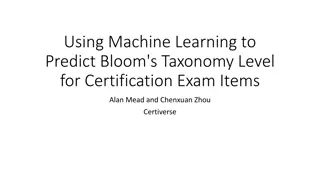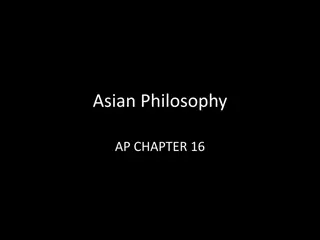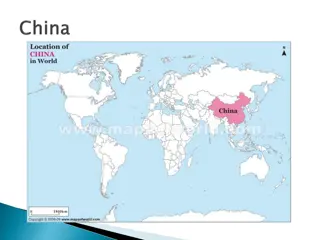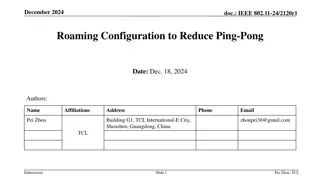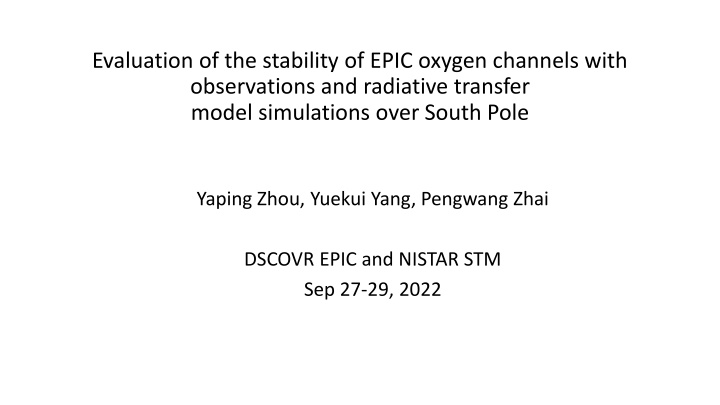
Evaluation of EPIC Oxygen Channels Stability Over South Pole
Explore the evaluation of stability of EPIC oxygen channels through observations and radiative transfer model simulations over South Pole, highlighting the significance of O2 bands in EPIC cloud products and the comparison of observations with simulations. Discover insights from clear sky measurements and the sensitivity of surface albedo in the South Pole region.
Download Presentation

Please find below an Image/Link to download the presentation.
The content on the website is provided AS IS for your information and personal use only. It may not be sold, licensed, or shared on other websites without obtaining consent from the author. If you encounter any issues during the download, it is possible that the publisher has removed the file from their server.
You are allowed to download the files provided on this website for personal or commercial use, subject to the condition that they are used lawfully. All files are the property of their respective owners.
The content on the website is provided AS IS for your information and personal use only. It may not be sold, licensed, or shared on other websites without obtaining consent from the author.
E N D
Presentation Transcript
Evaluation of the stability of EPIC oxygen channels with observations and radiative transfer model simulations over South Pole Yaping Zhou, Yuekui Yang, Pengwang Zhai DSCOVR EPIC and NISTAR STM Sep 27-29, 2022
Objective EPIC s O2 bands: A-band (764nm, 780nm) and B-band (688nm, 680nm) play significant roles in EPIC cloud products Cloud effective pressure (CEP) Cloud mask over snow/ice surface Cloud mask over Sun-glint regions over ocean Due to lack of inflight calibration, 680nm and 780nm calibration uses other well- calibrated instruments such as MODIS, MISR, and VIIRS. The 688nm and 764nm uses lunar observations assuming pairs of O2 bands have the same reflectance. Monitoring O2 band measurements over South Pole (SP) as a way of monitoring their stability.
O2 band clear sky measurements over South Pole South Pole location is chosen because of its uniform surface snow type and thinner layer of atmosphere. Ground and in-situ air measurements are available at the Amundsen Scott South Pole (SP) Station. Data are for the months of December and January from 2015 to 2022, except Dec. 2019 and Jan. 2020. EPIC pixels are chosen within 0.25hr of ground observation and 0.1o to 90oS. Only clear sky observations are selected based on visual surface sky reports and EPIC cloud mask. Small fluctuations and small but significant trends in all reflectance (except 764nm) are found. Both ratios have a significant positive trend.
Comparison of EPIC observations with RTM (EPIC simulator) simulations over South Pole Clear sky measurements coincident with available radiosonde measurement (~12UTC) Total 92 profiles available from Dec 2015 Jan 2022 (missing Dec 2019-Dec. 2020). Basic model input: Mean SZA from EPIC pixels converted to TOA SZA. Ground albedo: spectrally varying albedo from SP (Hudson et al. 2006) Ground height: lowest sounding layer (2.836 km ASL) 4 columns of base profile (subarctic summer) is replaced with sounding measurements (pres, temp, total air density, H2O density from surface to ~15 km). O2 and CO2 changed in proportion to total air density. Sensitivities on surface albedo, O3, O2 amount, boundary layer ice crystal/cloud, w/o improved pseudospherical shell (IPSS) approximation for earth curvature in the model
Observations versus simulations Simulations > observations for all 4 bands R680 and R780 overestimate ~ 3% R688 overestimate 5.3% R764 overestimate 13.5% B-band ratio overestimate 1.7% A-band ratio overestimate 10.%
Surface albedo sensitivity SP spectral albedos in 4 channels: 680nm: 0.965 688nm: 0.96 764nm: 0.93 780nm: 0.921 BRDF from SP AF in SP direction: 1.3 Hudson et al. 2006
B-band ratio: 0.553 0.577 0.571 0.570 0.570 0.564 0.574 0.589 0.552 A-band ratio: 0.280 (obs) 0.302 0.295 0.294 0.303 0.301 0.301 0.325 0.284 (110% O2)
Account for boundary aerosol and ice crystal
Reflectance as a function of angles - Simulations Rref Ratio Rabs 1 ?+ 1 1 1 ? = ?0= cos ?+ cos ?0 (1) 1 ?+1 ???? ????= ? ?(?, ?(?)) ?0 (2) ln(???? ????) = ?(?(?)) (1 1 ?+ ?0) (3) Zhou et al. 2020
How much variation (trend) of observation can be explained by geometry (orbit) variation? A-band and B-band ratio trend (Dec. 15- Jan.22), Regression with time. Variable Aband_obs Aband_sim Aband_obs_res Bband_obs Bband_sim Bband_obs_res offset -7.75e-03 -5.25e-03 -2.85e-04 slope 6.43e-05 4.36e-05 2.37e-06 r 0.31 0.52 0.01 confidence 97.8 81.6 53.4 -9.68e-03 -8.60e-03 -3.57e-03 8.07e-05 6.53e-05 2.98e-05 0.39 0.53 0.15 99.9 94.2 85.8 - Most of observed trend in A-band and B-band can be attributed to orbit (geometry) change. Residual trend is insignificant.
Summary South Pole provides a good monitoring site for O2 band because of its uniform, high surface albedo and available ground and in-situ atmospheric observations. The O2 band reflectance has shown small but significant trends over the past 7 austral summers among other small fluctuations. RTM simulations and sensitivities have been conducted to understand these trends and fluctuations. Among all factors, surface albedo (BRDF)and total O2 amount might be responsible for the unclosed bias of O2 ratios between the simulations and observations. Earth curvature treatment is important in TOA reflectance at high sun/view angles. Observed variability in BRF and O2 band ratios can be mostly explained by orbital (geometry) change. After removing the trend due to angle/orbit change, the residual trends in ratios are insignificant, indicating that instrument/calibration is stable. There are remaining puzzles in the UV bands.



